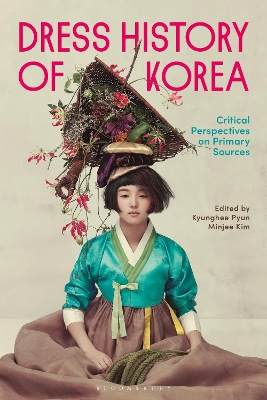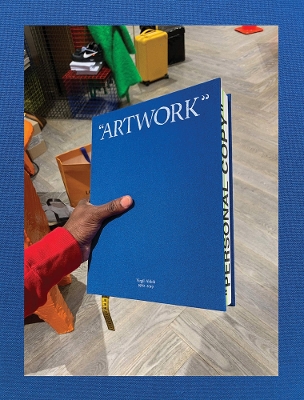Islamicate Textiles
 portes grátis
portes grátis
Islamicate Textiles
Fashion, Fabric, and Ritual
Shirazi, Faegheh
Bloomsbury Publishing PLC
03/2025
208
Mole
Inglês
9781350291263
Pré-lançamento - envio 15 a 20 dias após a sua edição
Descrição não disponível.
Introduction
1. Textiles and Symbols: A Melange of Cultural Signifiers
Kanga: Cloth with a message
Lion of Persia: From pre-Islamic to contemporary Iran
Felt and fabrics under domination: Central Asia
Ram's horn: Central Asia and Iran
2. Talismanic Textiles: Gender, Status, and the Supernatural
Protecting fiber and livelihood: The Ladakh
Blessed looms, blessed fibers
Sacred colors: Red, white, and light blue
Beyond the loom
Amulets: Protection against the unseen
Inscribed talismanic shirts
Gendered looms
3. The Politicization of Textiles: Colonialism to the Present
India and cotton: rejecting colonial rule
United we stand: India's Muslim weavers
West African wax cloth
Calico: The forbidden African cotton
Indian cloth in Southeast Asia
Keffiyeh: From functional to symbolic
The effect of Russian colonization on Central Asian politics
Tajikistan: Textiles and national branding
Soviet symbols on woven carpets
4. Refugees and Displaced Persons: Textile Signatures
The Siddis of India
Afghan refugee women: Embroidered lives
Weaving and war: Carpets depicting a nation under siege
Iraqi refugees: Textile arts of the past
Syrian and Iraqi refugees: Embroidered quilts and the charuga
Syrian refugees: The Ana collection
Weaving timeless symbols: War's impact on non-Muslim communities
5. Textiles and Death Rituals in Islamicate Societies
The burial garment for Muslims: The kafan
Piecing together the past
Tomb covers for the Prophet Muhammed: Kiswah
Tomb covers: Signifiers or status
Indian and South Asian tomb covers
Egyptian funeral tents: The art of Khayamiya
Conclusion
Glossary
Bibliography
Index
1. Textiles and Symbols: A Melange of Cultural Signifiers
Kanga: Cloth with a message
Lion of Persia: From pre-Islamic to contemporary Iran
Felt and fabrics under domination: Central Asia
Ram's horn: Central Asia and Iran
2. Talismanic Textiles: Gender, Status, and the Supernatural
Protecting fiber and livelihood: The Ladakh
Blessed looms, blessed fibers
Sacred colors: Red, white, and light blue
Beyond the loom
Amulets: Protection against the unseen
Inscribed talismanic shirts
Gendered looms
3. The Politicization of Textiles: Colonialism to the Present
India and cotton: rejecting colonial rule
United we stand: India's Muslim weavers
West African wax cloth
Calico: The forbidden African cotton
Indian cloth in Southeast Asia
Keffiyeh: From functional to symbolic
The effect of Russian colonization on Central Asian politics
Tajikistan: Textiles and national branding
Soviet symbols on woven carpets
4. Refugees and Displaced Persons: Textile Signatures
The Siddis of India
Afghan refugee women: Embroidered lives
Weaving and war: Carpets depicting a nation under siege
Iraqi refugees: Textile arts of the past
Syrian and Iraqi refugees: Embroidered quilts and the charuga
Syrian refugees: The Ana collection
Weaving timeless symbols: War's impact on non-Muslim communities
5. Textiles and Death Rituals in Islamicate Societies
The burial garment for Muslims: The kafan
Piecing together the past
Tomb covers for the Prophet Muhammed: Kiswah
Tomb covers: Signifiers or status
Indian and South Asian tomb covers
Egyptian funeral tents: The art of Khayamiya
Conclusion
Glossary
Bibliography
Index
Este título pertence ao(s) assunto(s) indicados(s). Para ver outros títulos clique no assunto desejado.
Weave; Culture; Signifier; Cloth; Persia; Fabric; Gender; Muslim; Politicization; Colonialism; Central Asia; Refugee; Death Ritual; East to West; textile culture
Introduction
1. Textiles and Symbols: A Melange of Cultural Signifiers
Kanga: Cloth with a message
Lion of Persia: From pre-Islamic to contemporary Iran
Felt and fabrics under domination: Central Asia
Ram's horn: Central Asia and Iran
2. Talismanic Textiles: Gender, Status, and the Supernatural
Protecting fiber and livelihood: The Ladakh
Blessed looms, blessed fibers
Sacred colors: Red, white, and light blue
Beyond the loom
Amulets: Protection against the unseen
Inscribed talismanic shirts
Gendered looms
3. The Politicization of Textiles: Colonialism to the Present
India and cotton: rejecting colonial rule
United we stand: India's Muslim weavers
West African wax cloth
Calico: The forbidden African cotton
Indian cloth in Southeast Asia
Keffiyeh: From functional to symbolic
The effect of Russian colonization on Central Asian politics
Tajikistan: Textiles and national branding
Soviet symbols on woven carpets
4. Refugees and Displaced Persons: Textile Signatures
The Siddis of India
Afghan refugee women: Embroidered lives
Weaving and war: Carpets depicting a nation under siege
Iraqi refugees: Textile arts of the past
Syrian and Iraqi refugees: Embroidered quilts and the charuga
Syrian refugees: The Ana collection
Weaving timeless symbols: War's impact on non-Muslim communities
5. Textiles and Death Rituals in Islamicate Societies
The burial garment for Muslims: The kafan
Piecing together the past
Tomb covers for the Prophet Muhammed: Kiswah
Tomb covers: Signifiers or status
Indian and South Asian tomb covers
Egyptian funeral tents: The art of Khayamiya
Conclusion
Glossary
Bibliography
Index
1. Textiles and Symbols: A Melange of Cultural Signifiers
Kanga: Cloth with a message
Lion of Persia: From pre-Islamic to contemporary Iran
Felt and fabrics under domination: Central Asia
Ram's horn: Central Asia and Iran
2. Talismanic Textiles: Gender, Status, and the Supernatural
Protecting fiber and livelihood: The Ladakh
Blessed looms, blessed fibers
Sacred colors: Red, white, and light blue
Beyond the loom
Amulets: Protection against the unseen
Inscribed talismanic shirts
Gendered looms
3. The Politicization of Textiles: Colonialism to the Present
India and cotton: rejecting colonial rule
United we stand: India's Muslim weavers
West African wax cloth
Calico: The forbidden African cotton
Indian cloth in Southeast Asia
Keffiyeh: From functional to symbolic
The effect of Russian colonization on Central Asian politics
Tajikistan: Textiles and national branding
Soviet symbols on woven carpets
4. Refugees and Displaced Persons: Textile Signatures
The Siddis of India
Afghan refugee women: Embroidered lives
Weaving and war: Carpets depicting a nation under siege
Iraqi refugees: Textile arts of the past
Syrian and Iraqi refugees: Embroidered quilts and the charuga
Syrian refugees: The Ana collection
Weaving timeless symbols: War's impact on non-Muslim communities
5. Textiles and Death Rituals in Islamicate Societies
The burial garment for Muslims: The kafan
Piecing together the past
Tomb covers for the Prophet Muhammed: Kiswah
Tomb covers: Signifiers or status
Indian and South Asian tomb covers
Egyptian funeral tents: The art of Khayamiya
Conclusion
Glossary
Bibliography
Index
Este título pertence ao(s) assunto(s) indicados(s). Para ver outros títulos clique no assunto desejado.







